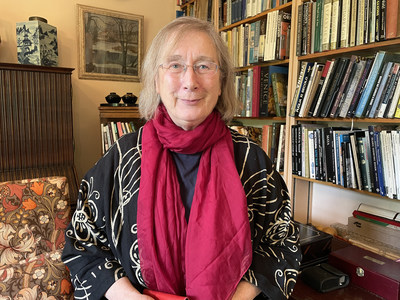Giving Voice to Mute Objects, British Art Historian Wins 2022 Tang Prize in Sinology
Comunicato Precedente

Comunicato Successivo

Professor Rawson has also made extensive studies of ancient Chinese tombs which provided a complete afterlife world for the dead. Shang and Zhou period vertical shaft tombs were accompanied by bronze and jade artifacts, which not only gave the dead objects for ritual and status, but also weapons and carriages for war. Many major changes occurred with the Qin. The elaborate burial of the First Emperor, Qin Shi Huangdi, not only contained an army of terracotta warriors, but also stables, carriages, court officials, wrestlers, concubines, and images of the heavenly bodies, making the tomb not an image of a universe, but actually creating this universe for the afterlife of its occupant. In this research, Professor Rawson has drawn our attention to the very different approach in ancient China to the notion of images, where the terracotta warriors were in the Emperor's eyes a complete army for warfare in the afterlife.
Professor Rawson's contributions to the field of Sinology extend beyond original and trailblazing scholarly contributions. Her tireless efforts to develop and promote exchange in the field of Sinology as well as help the public better understand Chinese civilization are equally laudable. Starting out as a museum curator, she has long been both a practitioner and an academic, and the impact of her curated exhibitions has long been evident to all. Even after moving to the University of Oxford after 28 years of service at the British Museum, she continued to present the diversity of Chinese culture to the public through enlightening exhibitions including China: The Three Emperors, 1662-1795. Held at the Royal Academy of Arts from 2005 to 2006, this exhibition took us back to imperial China, to the reigns of three of the most powerful Qing emperors, to explore the artistic and cultural riches of this period and their vivid connotations.

About the Tang Prize
Since the advent of globalization, mankind has been able to enjoy the convenience brought forth by the advancement of human civilization and science. Yet a multitude of challenges, such as climate change, the emergence of new infectious diseases, wealth gap, and moral degradation, have surfaced along the way. Against this backdrop, Dr.
Samuel Yin established the Tang Prize in
December 2012. It consists of four award categories, namely Sustainable Development, Biopharmaceutical Science, Sinology, and Rule of Law. Every other year, four independent and professional selection committees, comprising many internationally renowned experts, scholars, and Nobel winners, choose as Tang Prize laureates people who have influenced and made substantive contributions to the world, regardless of ethnicity, nationality or gender. A cash prize of
NT$50 million (approx. US$1.7 million) is allocated to each category, with
NT$10 million (approx. US$ 0.35 million) of it being a research grant intended to encourage professionals in every field to examine mankind's most urgent needs in the 21st century, and become leading forces in the development of human society through their outstanding research outcomes and active civic engagement.
Photo - https://mma.prnewswire.com/media/1842784/The_Tang_Prize_Foundation_Jessica_Rawson.jpg





